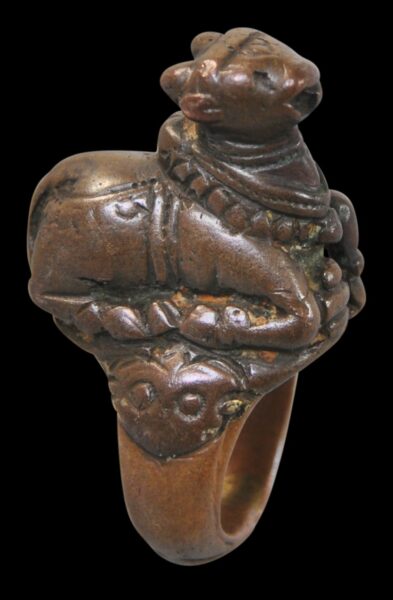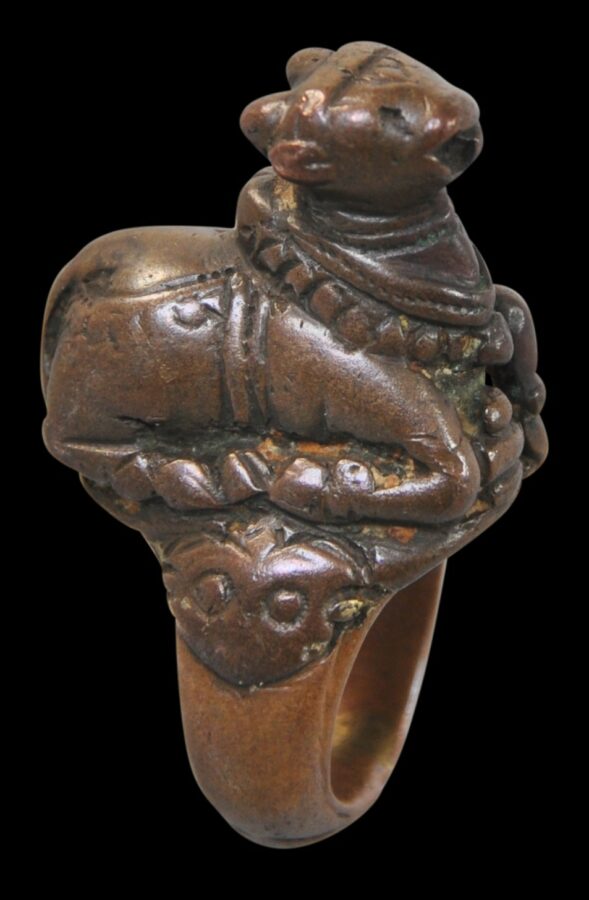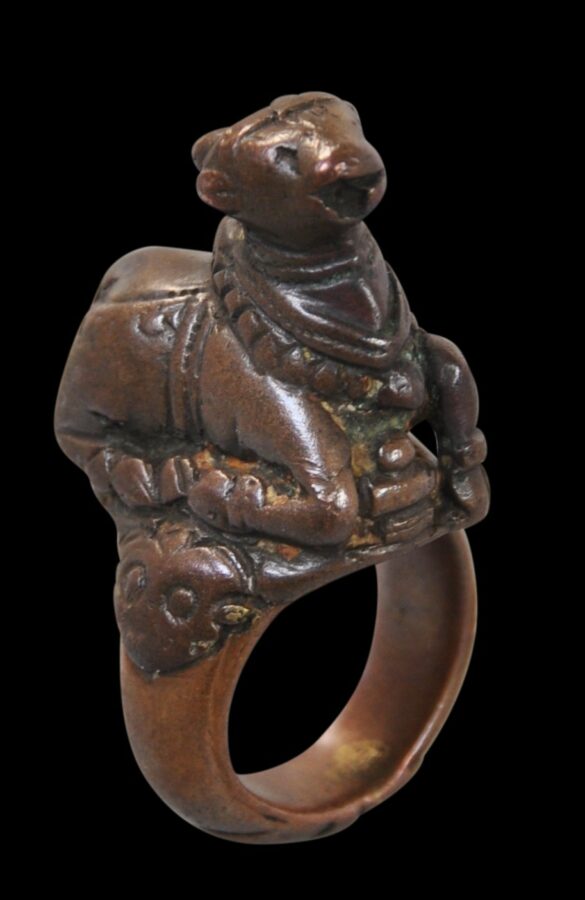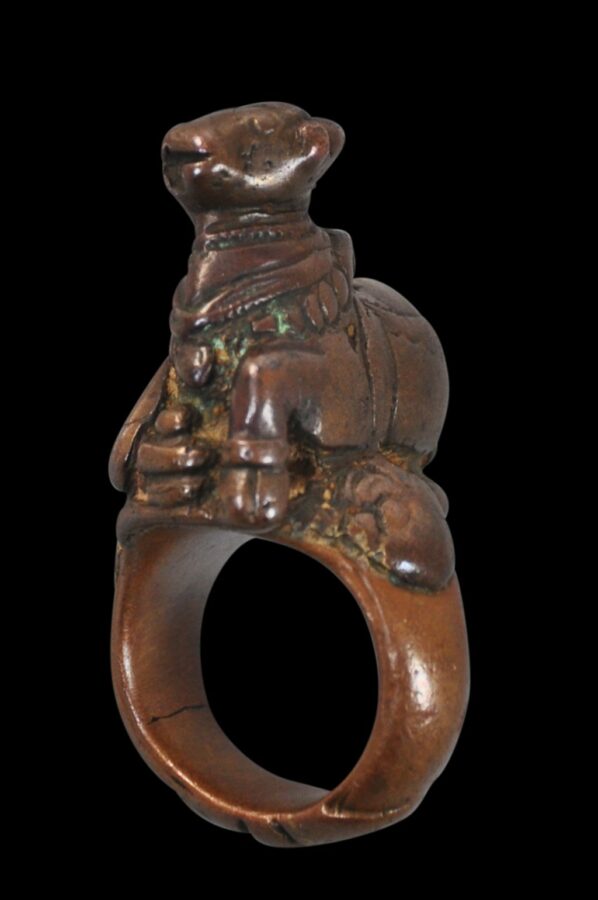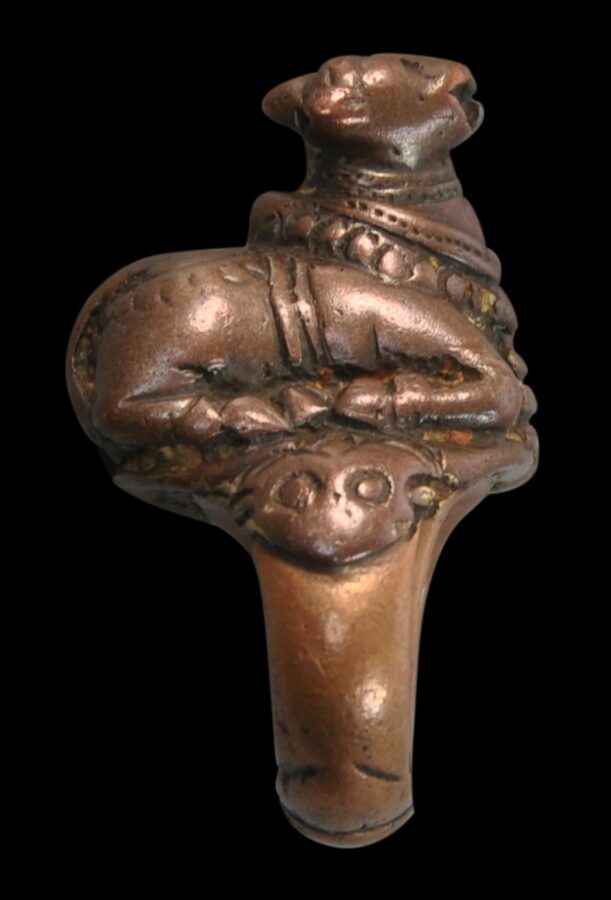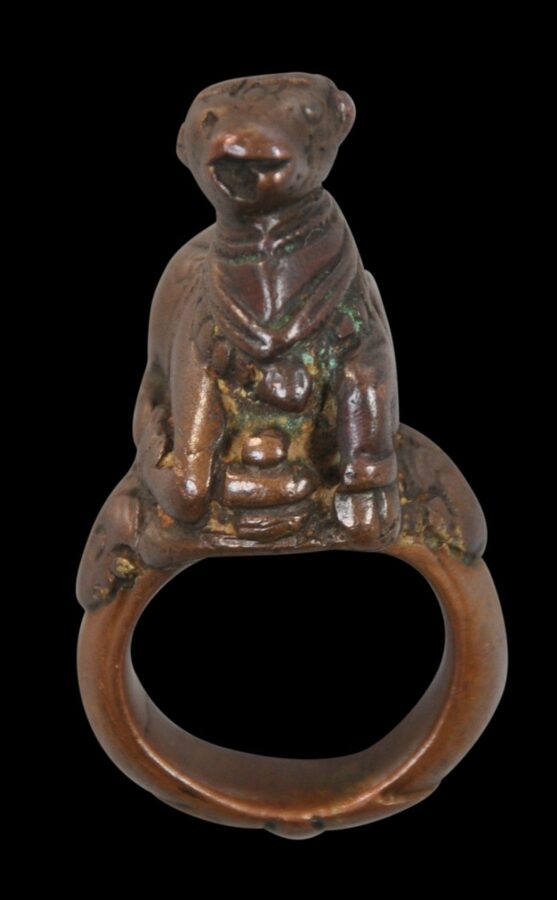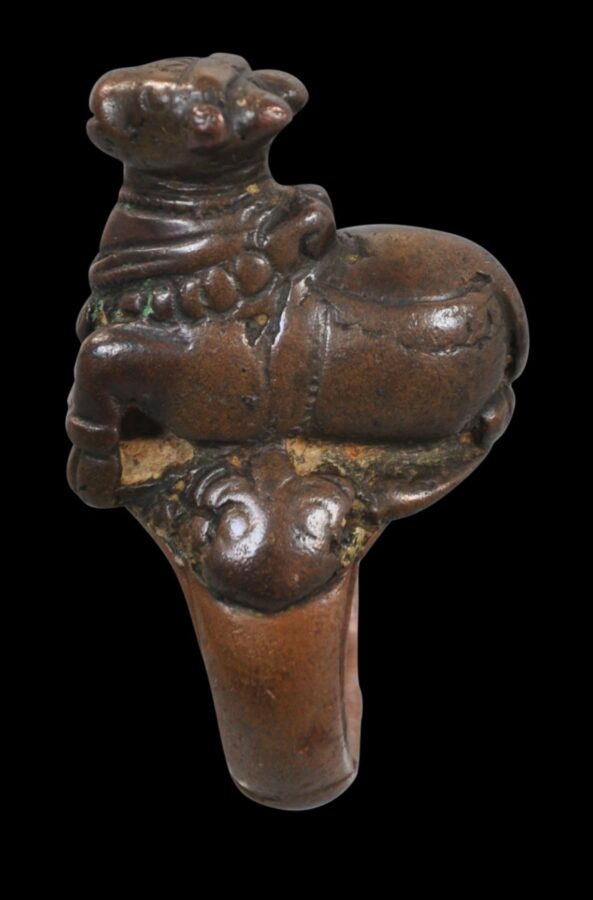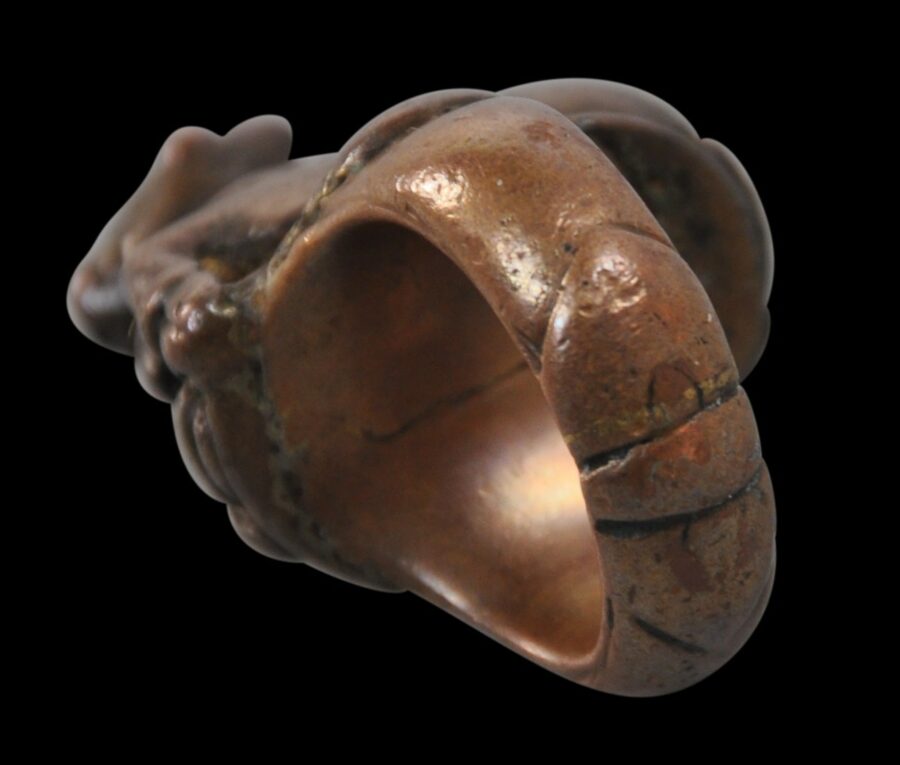This ring portrays the sacred bull Nandi, the vahana (celestial vehicle) of Shiva, at rest. Nandi is shown festooned with strings of bells and has been cast in copper. The figure sits on a hoop that has been cast in more of a brass-coloured metal.
The ring has tremendous patina and age.
Such a ring was worn by members of the Lingayat sect for ritual use (Untracht, 1997, p. 263).
The Lingayat sect became prominent in the twelfth century as a reaction to Brahmanism. Many Lingayats today live in Karnataka, Maharashtra and Tamil Nadu. The sect rejects the supremacy of the Brahmans; denies polytheism and acknowledges Shiva as the one true god thus rejecting Brahma and Vishnu. It rejects caste distinctions, rebirth, pilgrimages, temple worship and sacrifice; does not burn its dead but buries them; does not allow child marriage, and does allow widows to remarry. The Lingayats believe movable lingams to be the only true symbol of Shiva. Individuals are initiated into the sect as they enter adulthood.
Lingayat sacred jewellery generally is restricted to lingam caskets (ayigala) made of silver, brass or wood, depending on the wealth of the owner. These were worn suspended around the neck of each adult adherent and contain what is known as a jangama lingam. Such lingams comprise a small piece of stone carved by specialist carvers that is then covered in a dark, protective compound called kauthi. This comprises a mix of lac, clay, sacred cow dung ashes, and marking-nut tree fruit juice or black antimony powder. Each jangama lingam is created for one specific individual only and must be protected and guarded, hence the need for a protective box. All Lingayat adherents carry their personal lingam with them at all times. After death they are buried in a sitting position with the lingam in the left hand.
The actual ring here is published in Untracht (1997, p. 263).
It is in fine condition with excellent patina and wear.
References
Untracht, O., Traditional Jewelry of India, Thames & Hudson, 1997.


